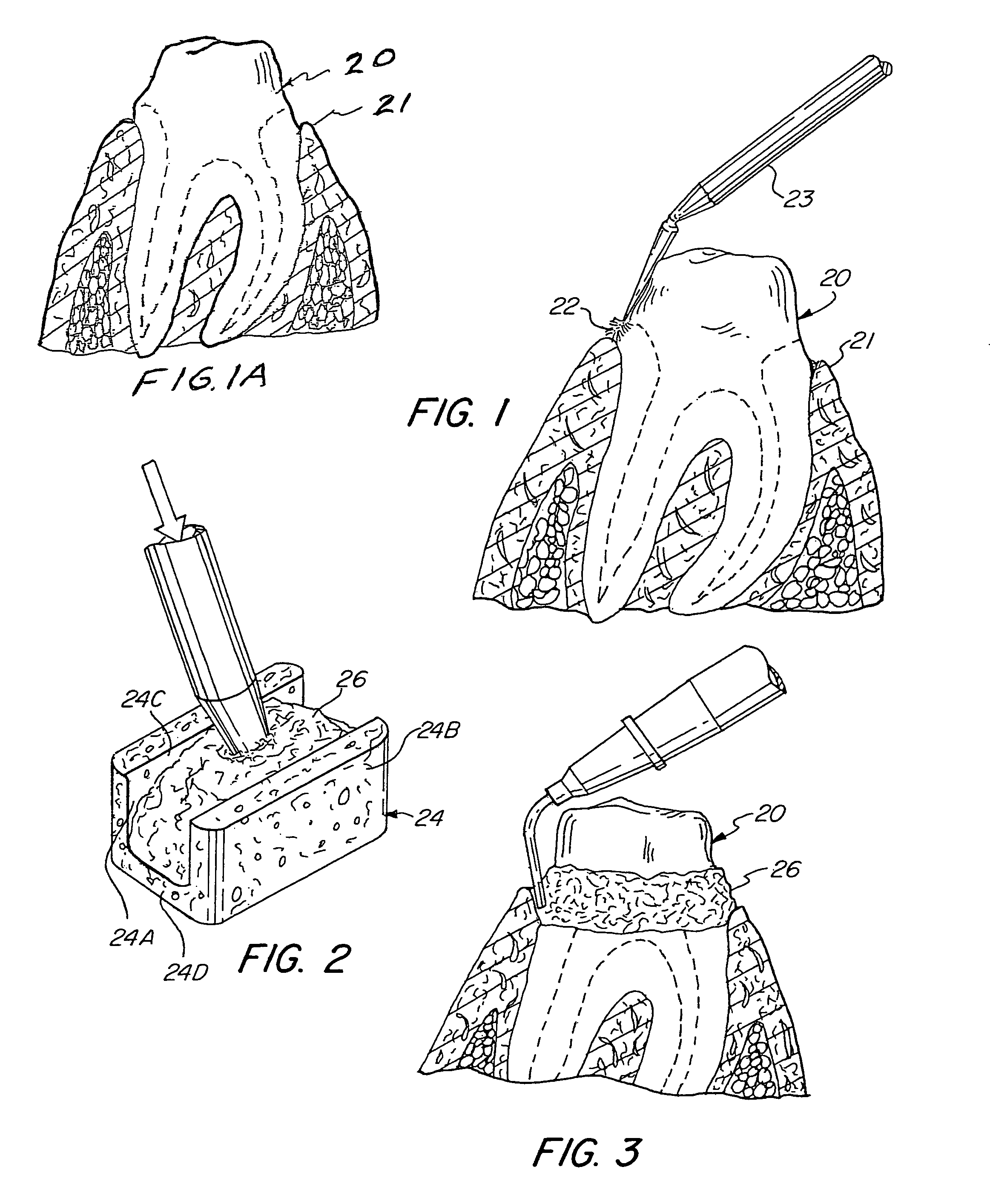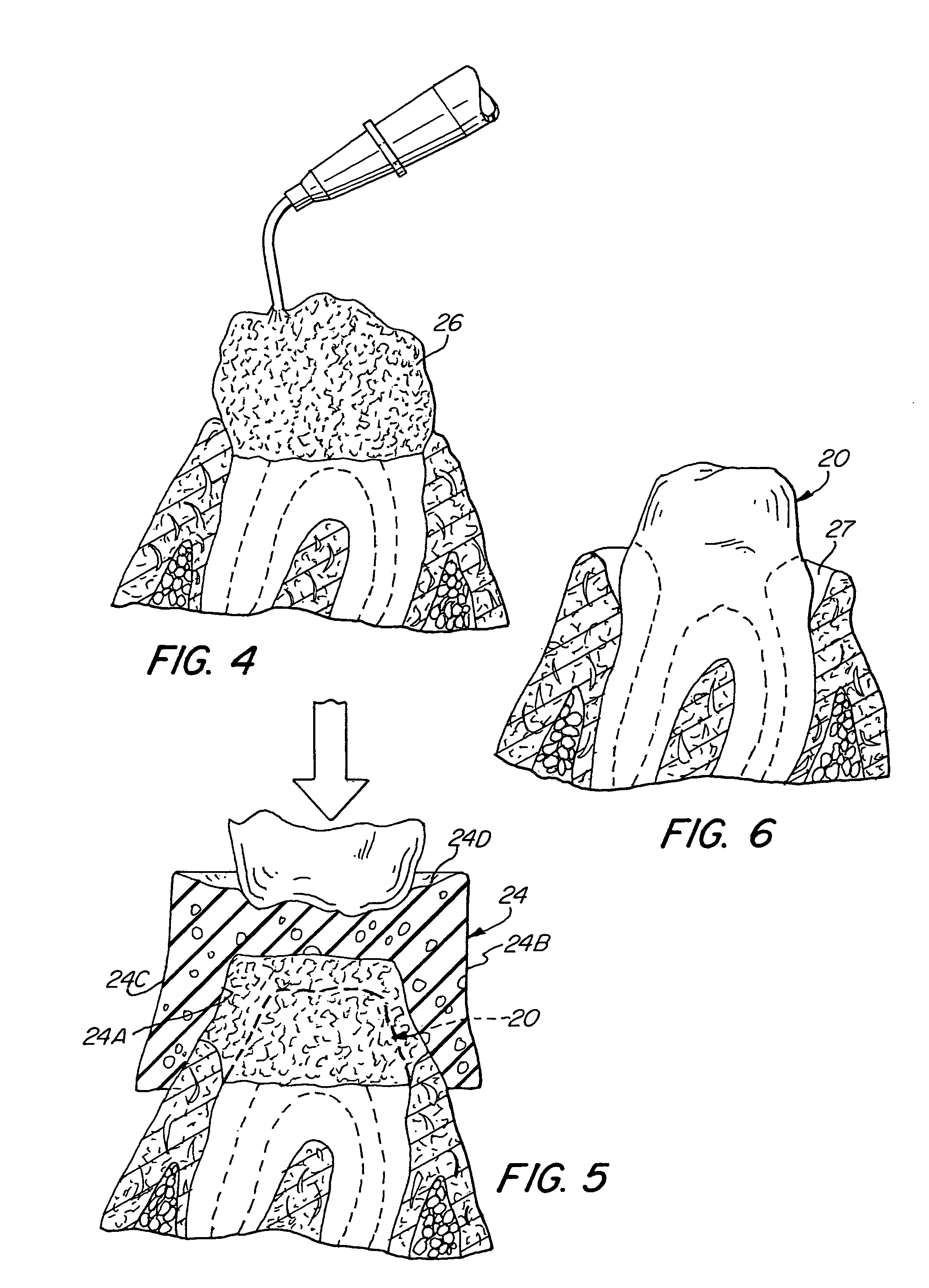Gingival tissue retraction device and method
a tissue retraction and gingival tissue technology, applied in the field of tissue retraction devices and methods, can solve the problems of inability to make an impression of the prepared tooth, inability to accurately enlarge the space between the gum and the base of the tooth, and inability to accurately enlarge the space necessary for taking an accurate impression, etc., to achieve the effect of enhancing the retraction of gingival tissue and ensuring the removal
- Summary
- Abstract
- Description
- Claims
- Application Information
AI Technical Summary
Benefits of technology
Problems solved by technology
Method used
Image
Examples
Embodiment Construction
[0063]Referring to the drawings, there is shown in FIG. 1A a tooth 20 which has been prepared for receiving a crown or bridge, prior to effecting the retraction of the gingival sulcus 21. However, before the impression can be taken for preparing the crown or bridge, it is imperative that the gingival sulcus tissue 21 be retracted in order for the dentist to make an accurate impression of the prepared tooth 20.
[0064]In accordance with this invention and to control any excessive gingival bleeding, an application of a liquid hemostatic agent 22, e.g. aluminum chloride, ferric sulfate or other suitable astringent is applied to the cut tissue in the area of the gingival sulcus. The astringent can be applied with Centrix's Benda micro applicator 23 as seen in FIG. 1, or by any other suitable applicator, e.g. Centrix, Inc.'s BENDA® brush, SoftStix™ disposable applicator, or syringe, and the like. The astringent 22 is applied with moderate pressure and by rubbing the astringent solution aga...
PUM
 Login to View More
Login to View More Abstract
Description
Claims
Application Information
 Login to View More
Login to View More - R&D
- Intellectual Property
- Life Sciences
- Materials
- Tech Scout
- Unparalleled Data Quality
- Higher Quality Content
- 60% Fewer Hallucinations
Browse by: Latest US Patents, China's latest patents, Technical Efficacy Thesaurus, Application Domain, Technology Topic, Popular Technical Reports.
© 2025 PatSnap. All rights reserved.Legal|Privacy policy|Modern Slavery Act Transparency Statement|Sitemap|About US| Contact US: help@patsnap.com



